
If you’re wondering how to start drawing abstract pattern doodles, this post is for you. The best way to learn is through real examples and that’s exactly what you’ll find here. I’ll guide you through three of my own artworks that use different kinds of patterns and techniques. Each one shows a different way to build abstract, organic drawings from scratch.
Use these examples as inspiration for your own sketchbook practice. Let’s explore!

The drawing “stranded” is all about contrast: it mixes organic forms with more structured shapes. This piece shows how abstract pattern doodles can combine nature-inspired textures with a hint of architecture or design.
At the base, you’ll see soft, flowing forms that look like sand dunes.
Scattered throughout are branch-like or root-like lines that curl and grow upward.
On the lower left, some parallel, straight lines add rhythm. They almost resemble water or tracks.
In the middle, there are small arched shapes that feel architectural, like a broken-down ruin.
Vertical elements rise up, almost like poles or dried trees.
Together, these elements create a scene that feels like a stranded boat or island stuck in a surreal landscape — which is why I named it Stranded.
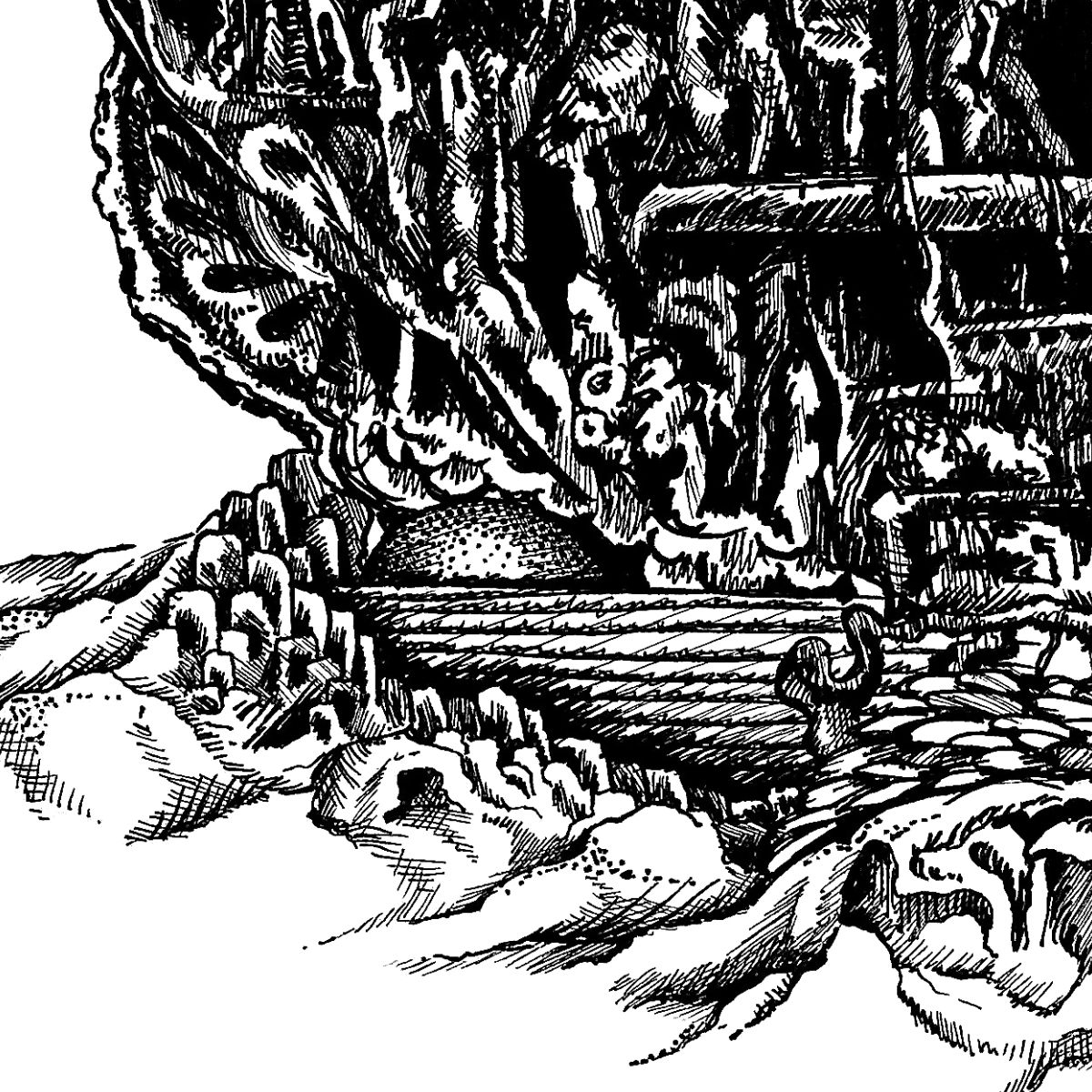
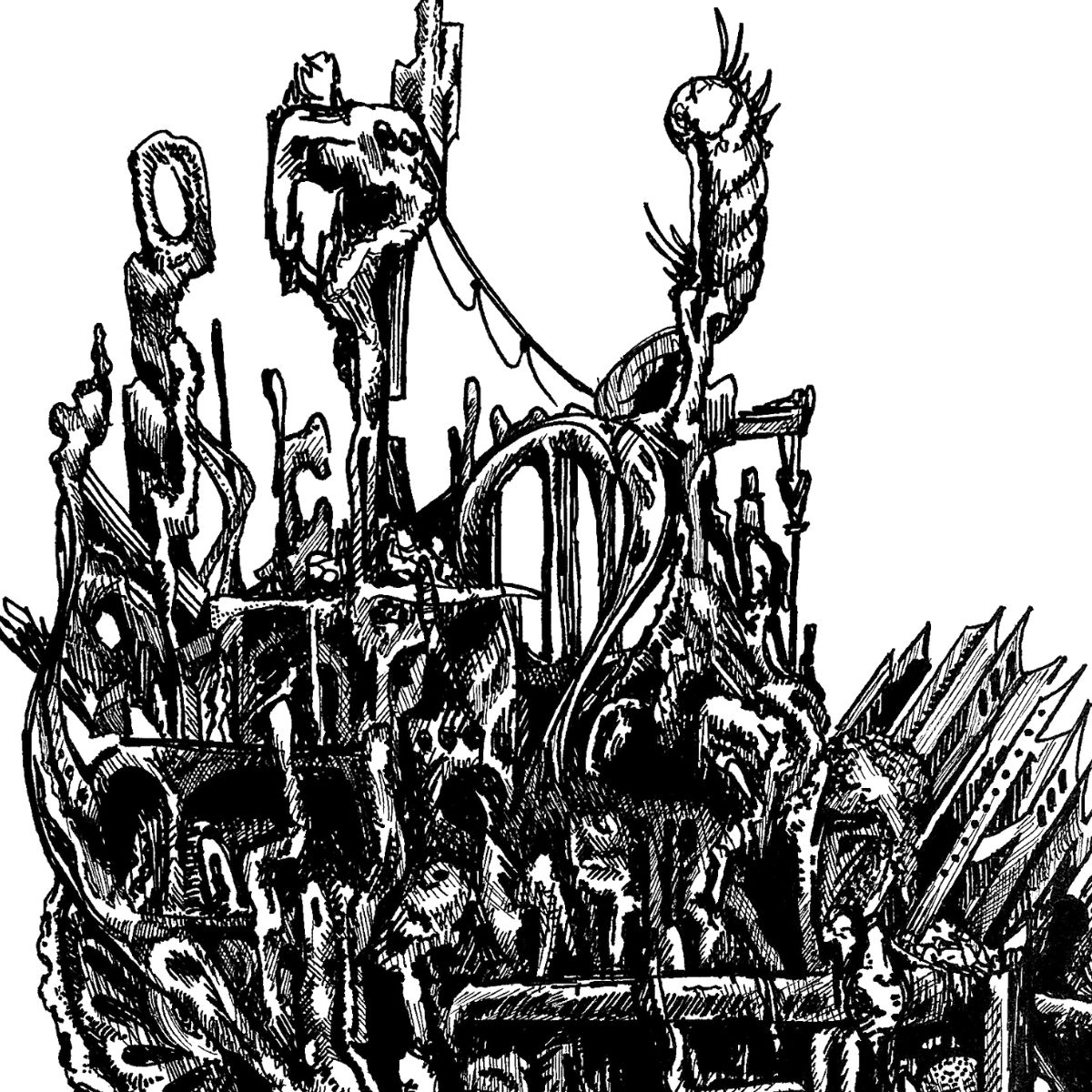
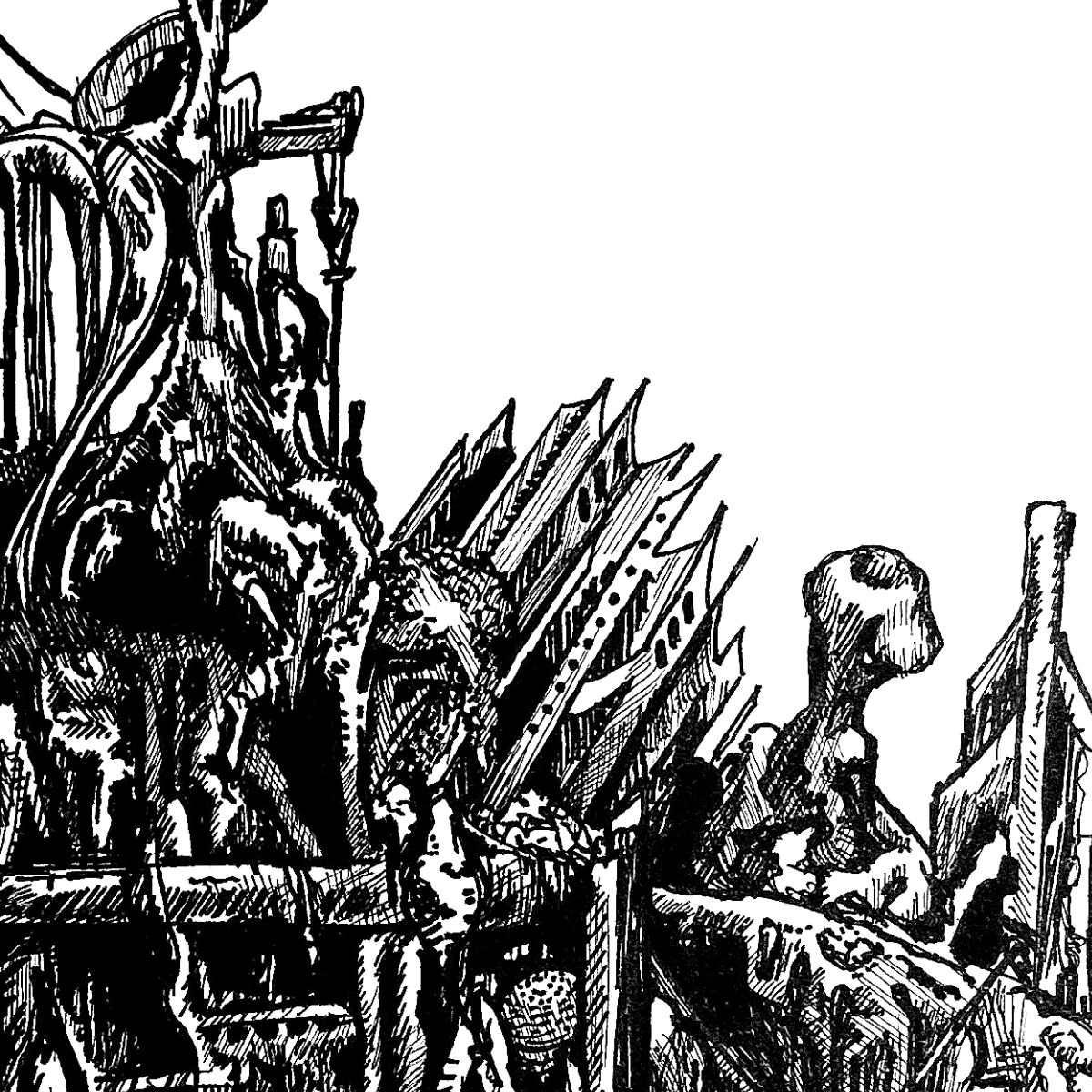
Start with a base of smooth, flowing shapes (think of dunes or waves).
Add in tangled lines that grow vertically.
Mix in straight lines or repeating arches to contrast the curves.
Let the image grow without planning. Let one form inspire the next.
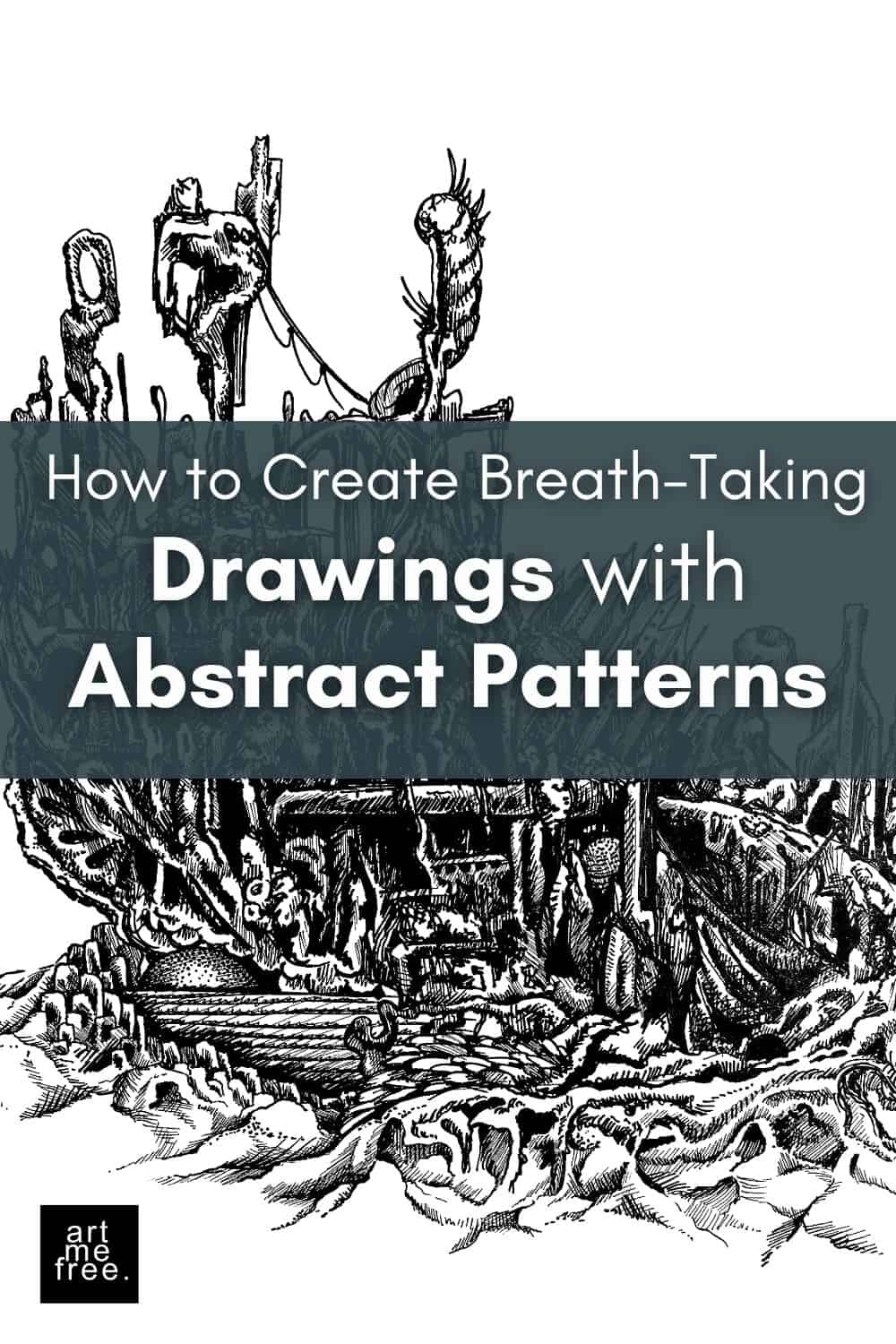
The drawing “floating” is built around the idea of weightless chaos. A chunk of something that’s part city, part alien world. This piece shows how abstract pattern doodles can use contrast and clustered detail to create a floating structure with depth and movement.
The drawing feels like a floating island or airborne machine.
The key feature is how the black shadow areas create depth. These were actually drawn first.
After placing a few dark spots on the page, I built around them with lighter lines and connected patterns.
You’ll see vertical structures, narrow platforms, and pieces hanging off like broken circuits or wires.
There’s a strange mix of future-tech and dark nature, with tangled wires and odd shapes growing from the main body.
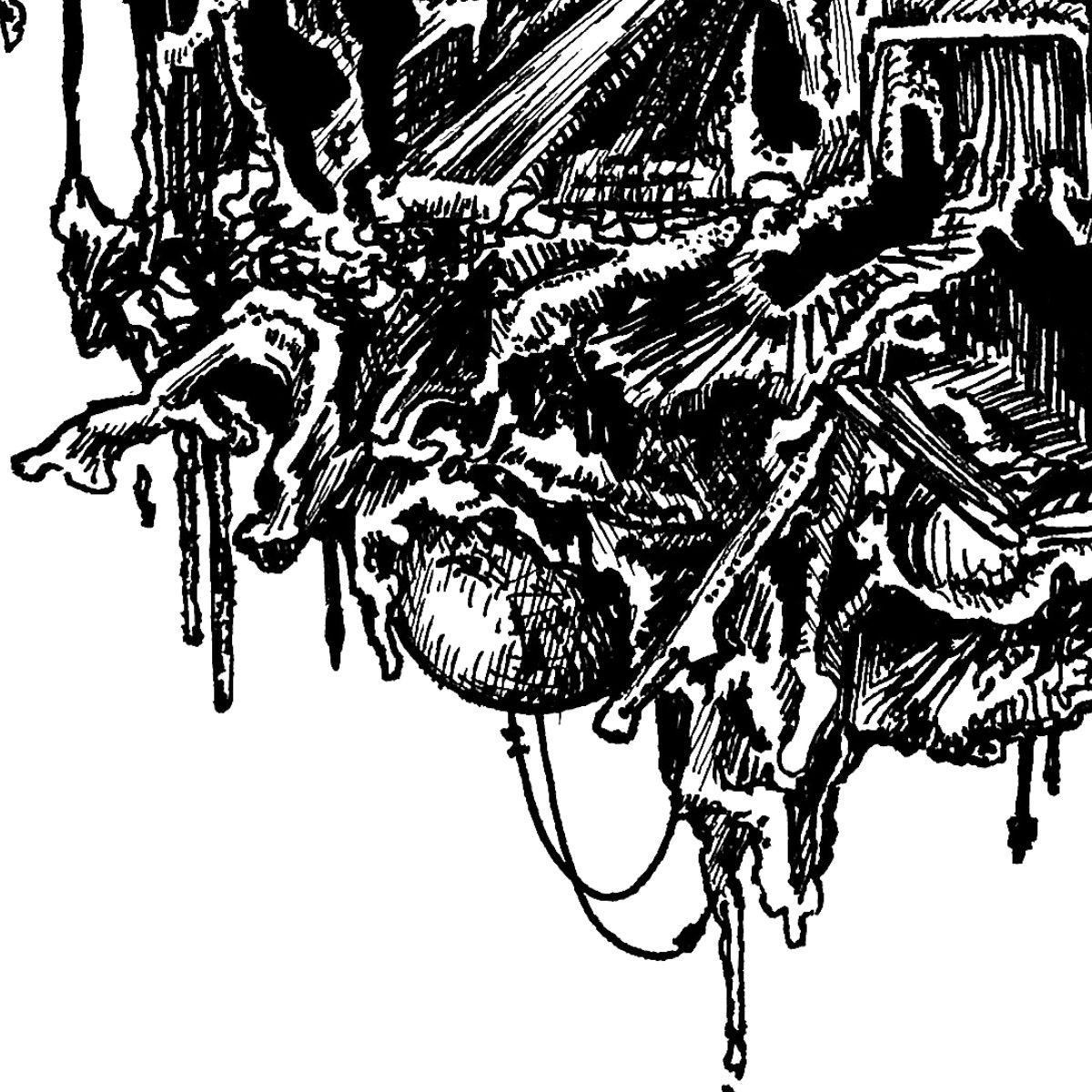
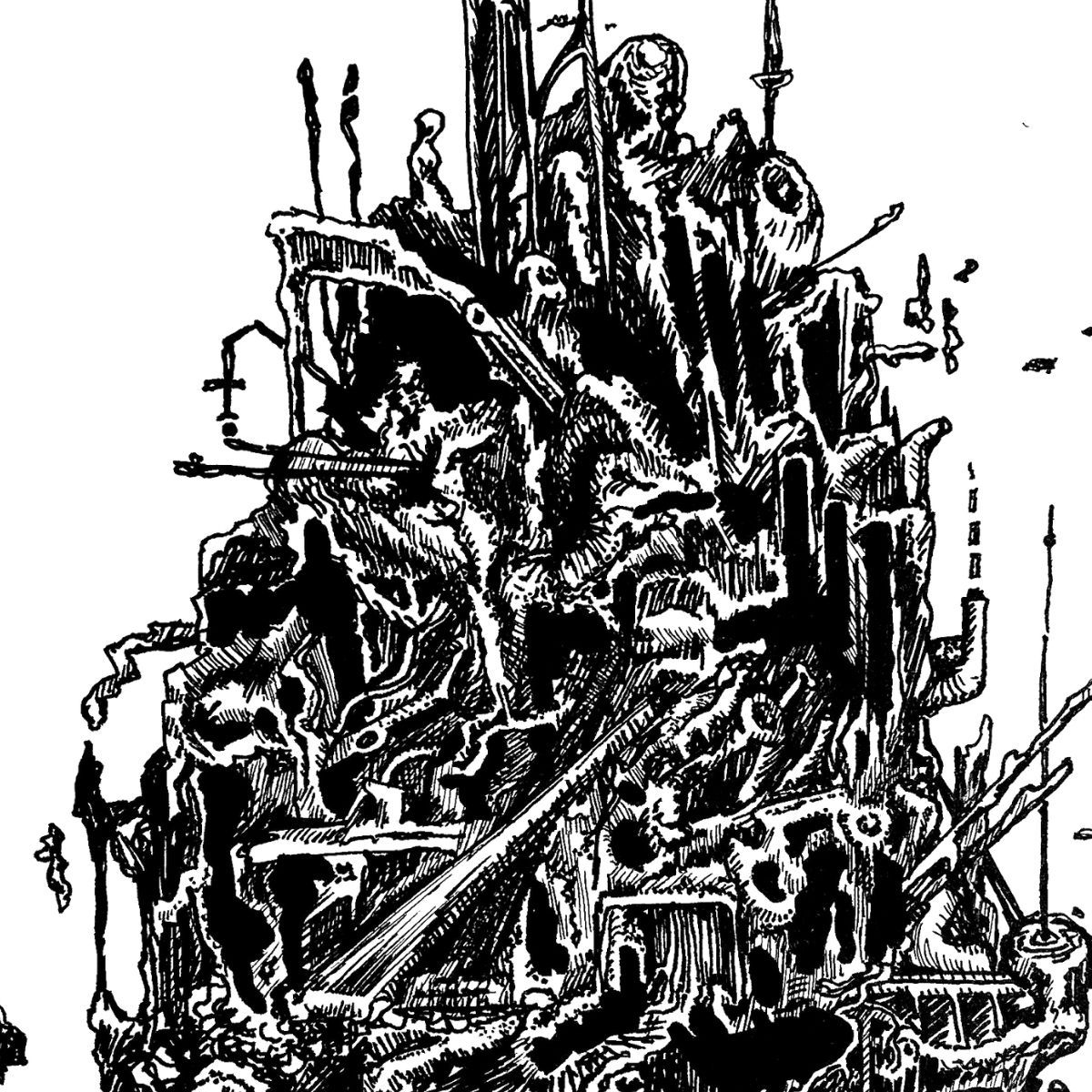
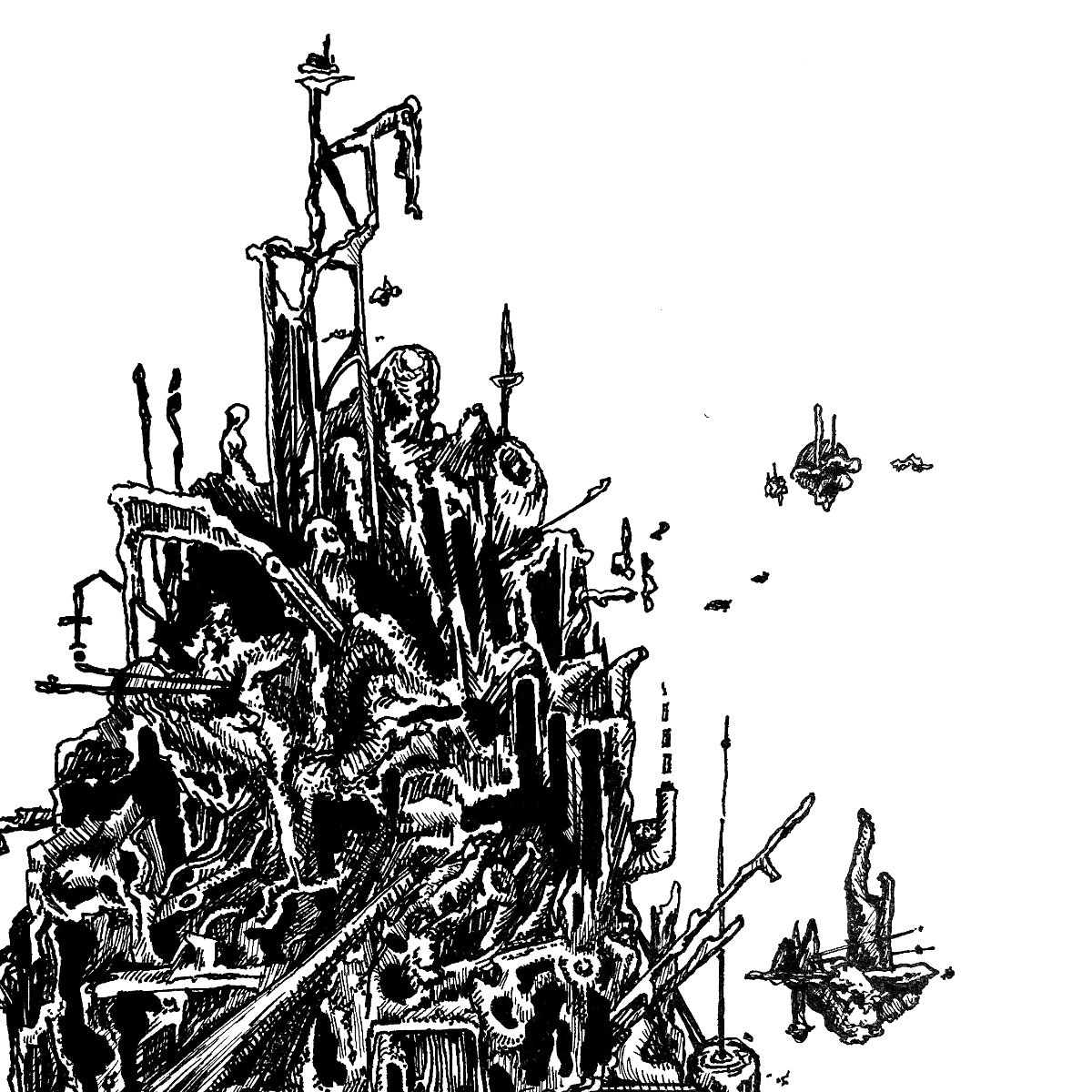
Begin with 5 to 10 black shapes spaced across your page.
Build around them using sharp angles, organic swirls, or stacked lines.
Let the black areas become “anchors” for a floating shape.
Add details like hanging elements, platforms, or vertical lines to suggest structure.
Let the final piece feel like it’s suspended in space. Create some little satellites around it.
This technique is also part of my free doodling workbook. It shows you exactly how to start from dark shapes and grow your doodle from there. If you’re looking for step-by-step guidance, be sure to download it.
Doodling is a fun and relaxing way to explore creativity, and now you can start your journey with my free workbook!
The Art of Doodling is a printable workbook designed to help you discover and improve your art skills, no experience needed. At artmefree, it’s all about embracing creativity in a simple, enjoyable way, whether you’re just starting out or looking for fresh inspiration.
16 pages packed with fun doodling exercises ✨
Helps improve and level up your drawing skills ✏️
Features pattern ideas and step-by-step guides 🗒️
Includes examples alongside open space to explore 🎨
Download it now and start doodling!
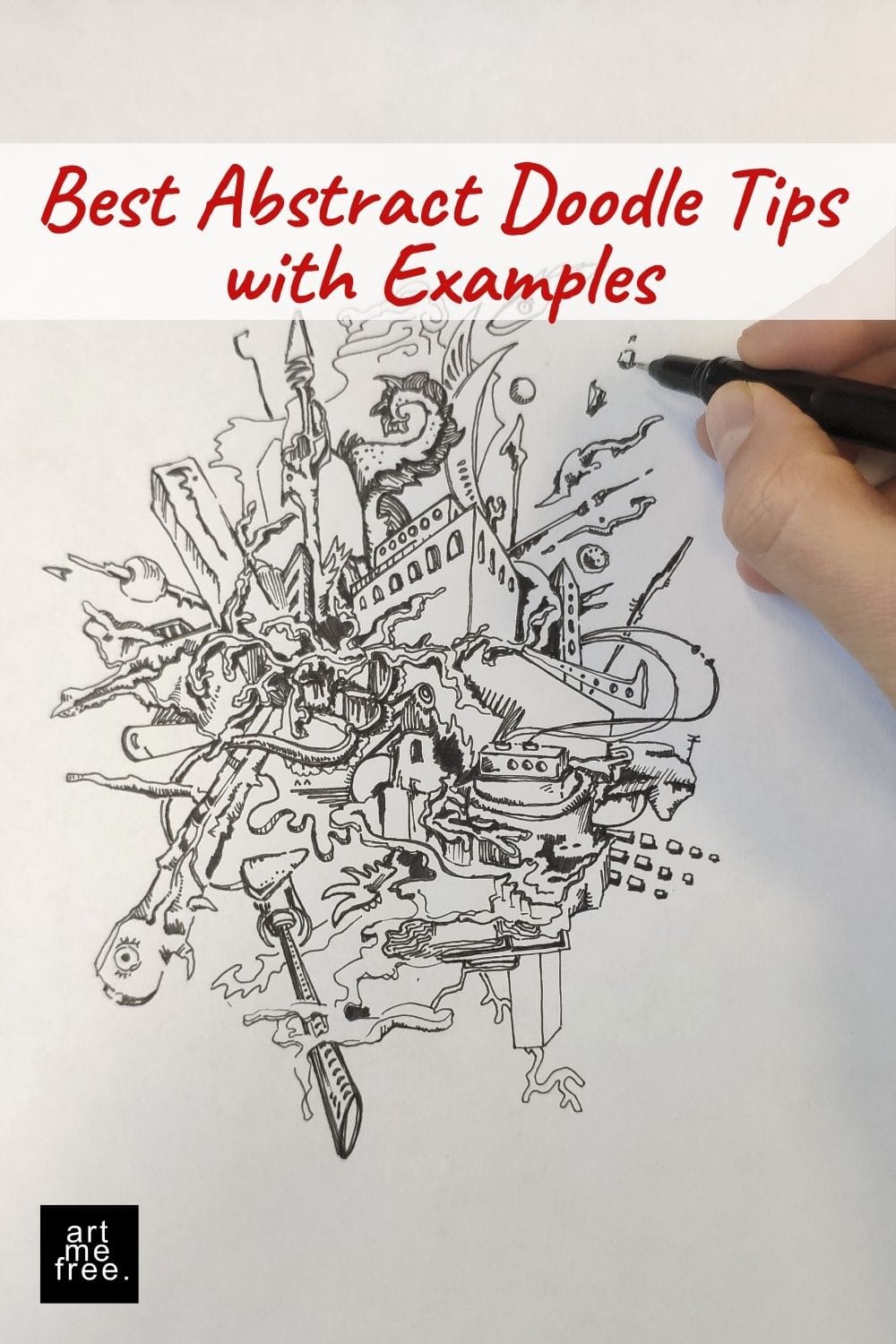
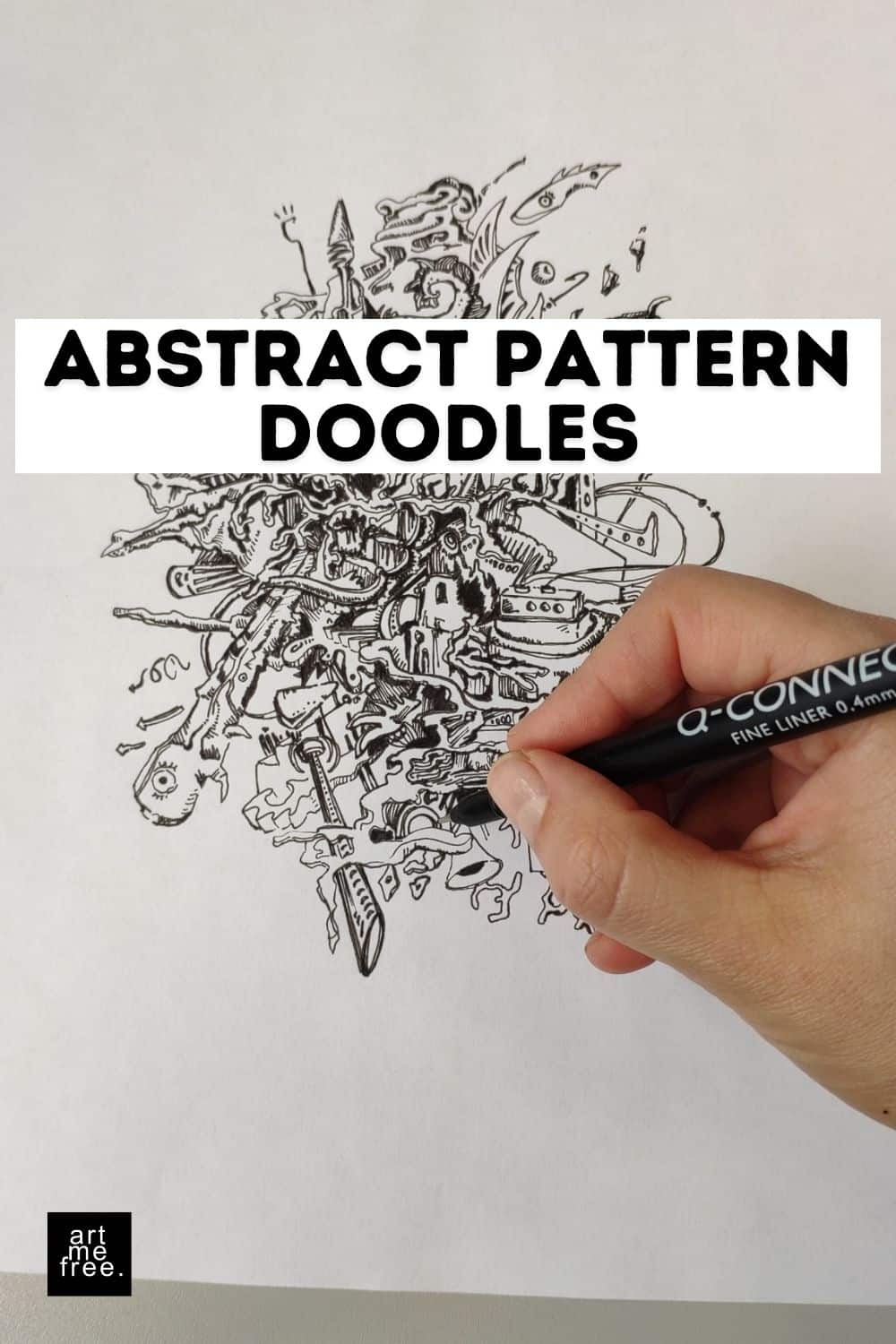
The artwork “rupture” is all about movement, energy, and controlled chaos. It’s a great example of how abstract pattern doodles can feel alive, like something is breaking open or expanding.
The drawing feels like an explosion or eruption. Lines move outward in all directions.
Inside the chaos, you’ll find shapes that look like buildings, mechanical parts, or eyes, all mixed together.
Some patterns are tight and repetitive, while others are wild and flowing.
There’s a strong sense of tension and release. Parts of the drawing are dense, while others feel open and airy.
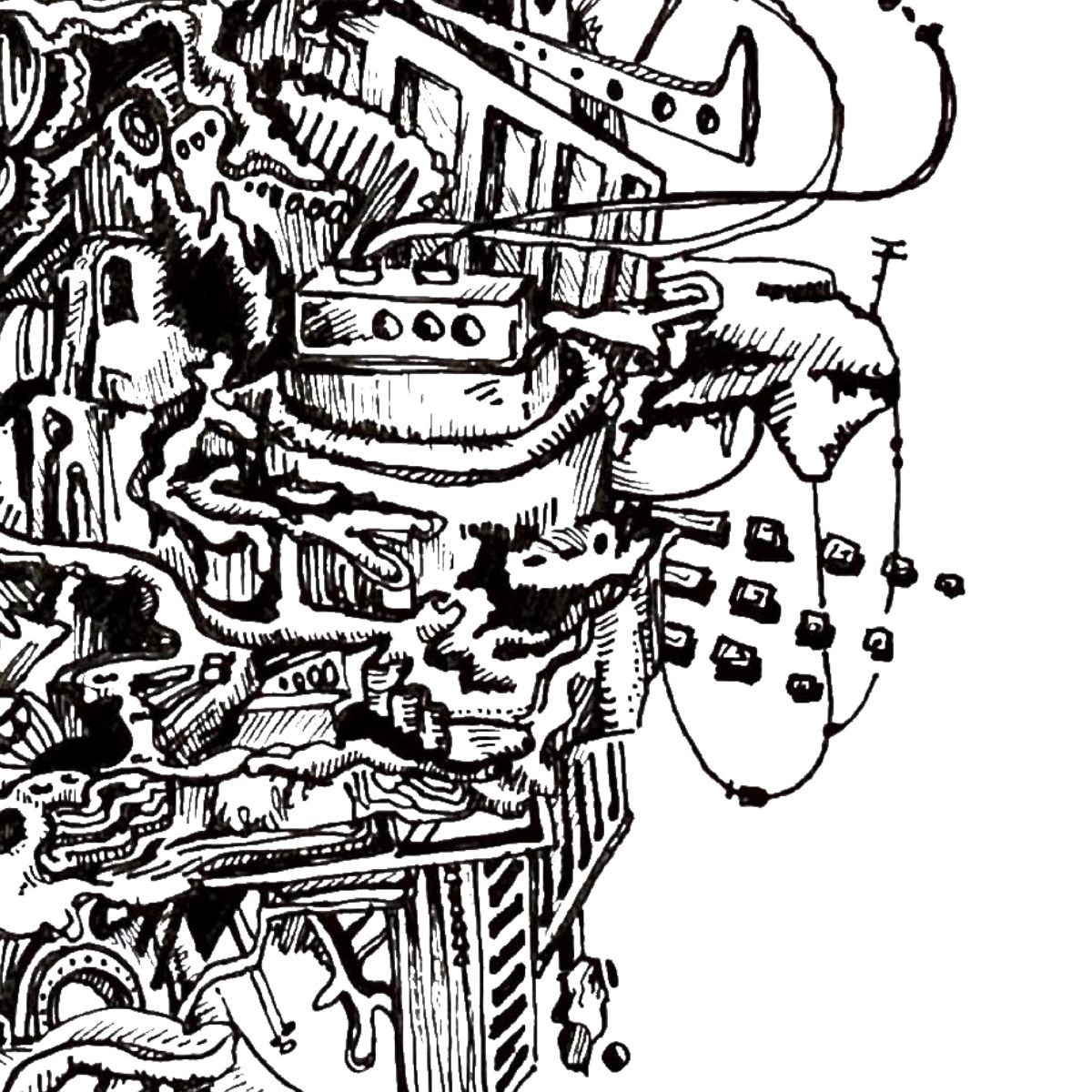
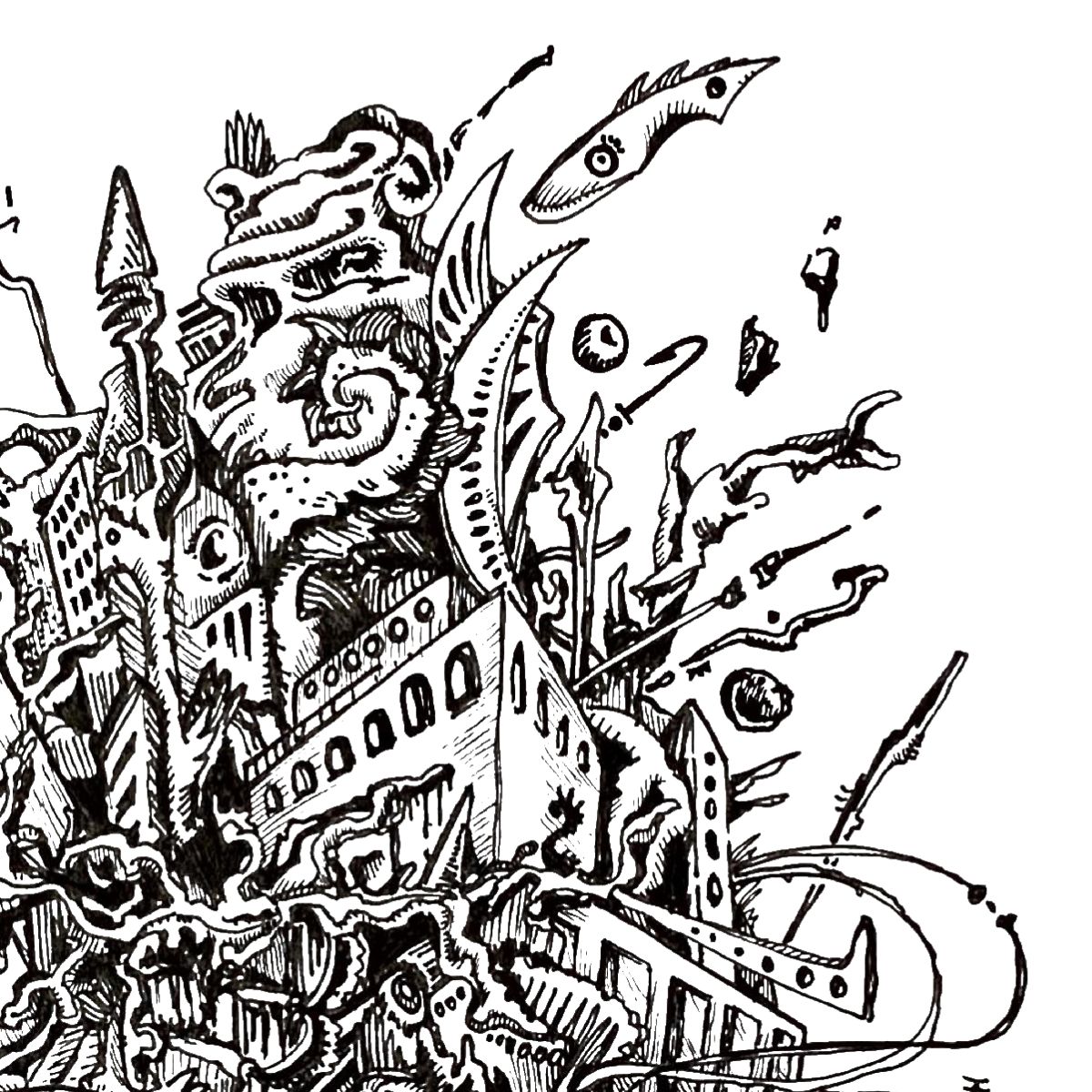
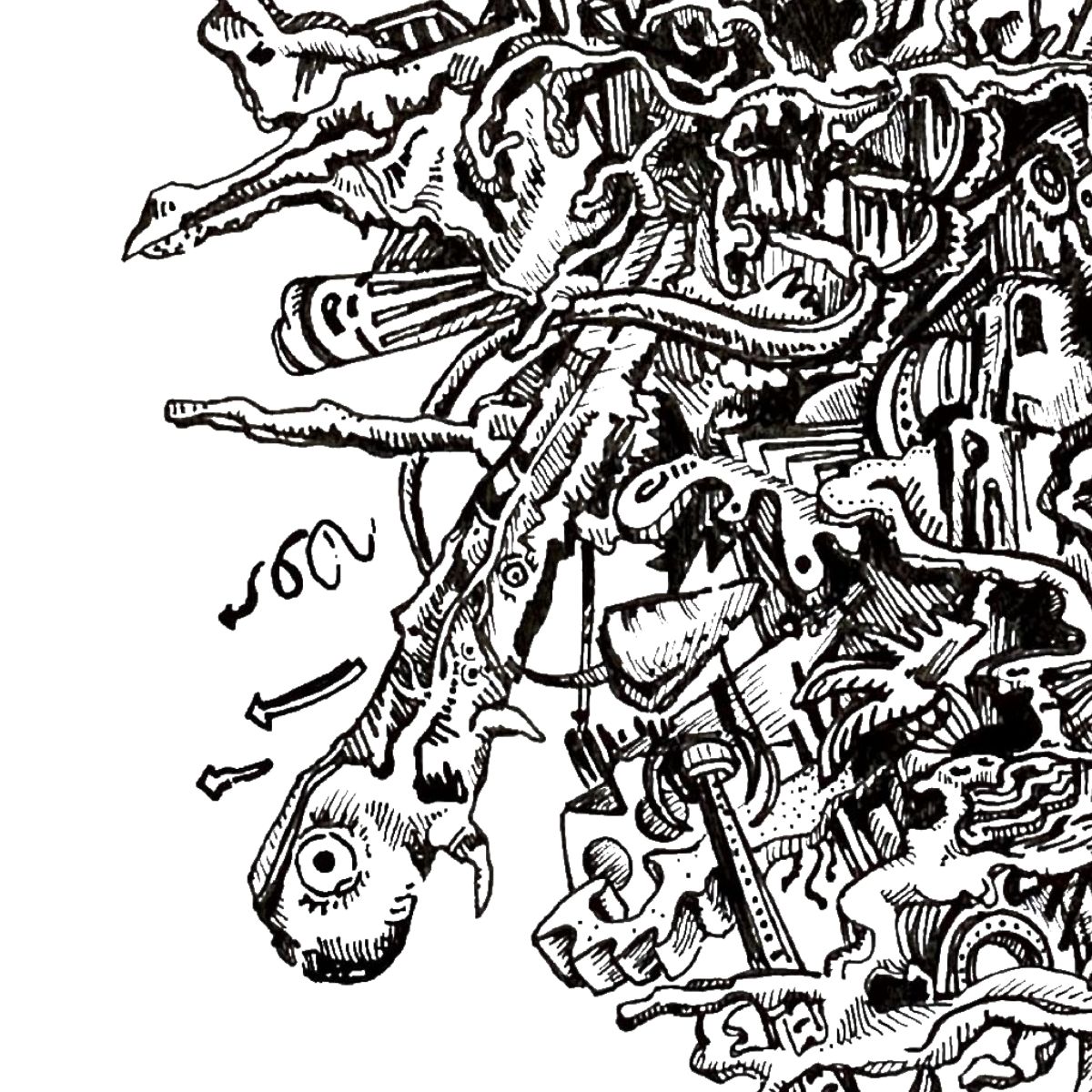
Start by placing a central “cluster” of patterns, anything from bricks to scribbles.
Let lines explode outward from that center in every direction.
Mix mechanical shapes (squares, gears, arrows) with organic ones (swirls, loops, tendrils).
Add empty space to give the eye some breathing room.
Don’t overthink! Let your emotions guide the shapes and energy of the drawing.

You don’t need a plan to create great abstract pattern doodles. These drawings are all about letting go, following your lines, and experimenting with contrast, shape, and flow.
If you’re not sure how to begin, try picking one of the examples above and re-creating its structure in your own way. Or use my free doodling workbook to get started with a step-by-step guide. Maybe you’ll start with dark shapes, maybe you’ll build a floating world, or maybe you’ll let your lines spiral outward like a controlled explosion.
Every abstract pattern doodle is different and that’s exactly what makes them so fun to draw.
To provide you with an optimal experience, we use technologies such as cookies to store and/or access device information. If you consent to these technologies, we may process data such as browsing behavior or unique IDs on this website. If you do not give or withdraw your consent, certain features and functions may be impaired.